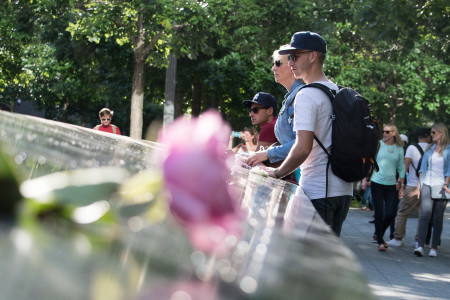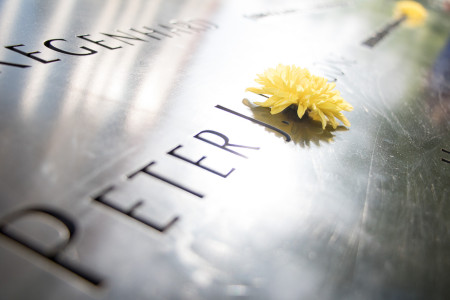Text and Photos By Timmy Hung-Ming Shen
Fifteen years have passed after the twin towers crumbled to the ground in New York from terrorist attacks. Media critics have said that American press has shown patriotism and nationalism in their coverage since the 9-11 attacks. But how serious is that? What was the situation really like when 9-11 happened in 2001?
“It was one that came as a complete surprise to everyone. No one was prepared for it,” said LynNell Hancock, a professor at Columbia University Graduate School of Journalism. She, at the time, led a class of about 15 journalism students who just enrolled for a month when the aircrafts hit the towers in New York City.
During the morning on September 11, 2001, an important political story was going on in the city. It was the mayoral primary, and Hancock assigned her students all over the city to do exit polling. “Our plan was that we were all getting together at about 5 p.m. in the journalism building for the discussion of the exit poll coverage,” she said. That’s what was supposed to happen.
Hancock was on her way to the city when the planes hit. However, the authorities closed down George Washington Bridge, forcing her to turn back. “I spent the next two days trying to find where all my students were,” she said, adding that the telecommunication went down for days.
“It was really a trial by fire,” said Hancock, raising her voice. “I couldn’t give them any direction about what to do.”
The instinct of a journalist is to want to be in the middle of the action. When there is a huge story, your curiosity kicks in, said the lecturer. However, lower Manhattan remained dangerous, while the fires were going and the smoke was toxic. “It was definitely a war zone,” said Hancock.
One of her students walked all the way from east New York, crossed the Brooklyn Bridge and reached what’s now called ground zero. Another student went straight to the hospital. “You saw a lot of people just walking like zombies, covered in white and dust, stunned and traumatized,” said Hancock.
The young journalists were traumatized as well. It was hard for anyone and especially for new students who hadn’t been reporters for long to approach people and ask them what their stories were.
“You certainly don’t want that to happen, but it was an incredible teaching moment,” said Hancock. “We could instantly talk about ethics, about trauma, about what the role of the journalist is.”
This was what Hancock told her students: what you are as a journalist is the first draft of history. “We were needed more than anything,” she said.
Hancock pointed out that, unfortunately, the forces of patriotism and nationalism took over and 9-11 became a negative influence on politics. New York City had become a really different place after the attacks. “There was a sense that we’re all together. We’re all under attack.”
NBC set up all kinds of flags behind the anchor desk. Anchors also wore pins on their outfits. The coverage, in general, was not reflective.
There was a real reluctance to question any of the political leaders, according to Hancock. “[They] did not question the pentagon, did not question the federal government as much as they should’ve,” she said with a sigh. “We [have] since been very critical. We [have] since realized that the press played a huge role in the invasion of Iraq.”
Now, there is more reasonable, smarter coverage, but it was not skeptical enough coming out of 9-11.
With technology and the help of social media nowadays, journalists are able to cover conflicts and disasters in a totally different way.
Before social media became such a big force, the media companies had been the main gatekeepers for the news. It was very difficult for an ordinary person sitting in his apartment to get control and get his voice out, independent of being filtered through large media organizations.
Then, news went social and the whole balance changed.
“What we’ve tried to do in the journalism school is to say technology should be used to serve journalism, not the other way around,” said Hancock. “It should be just another tool in our reporting toolbox that we can’t ignore.”
Journalism schools are trying to find a way in the modern world that could help journalists cover conflicts.
“There’s a whole democratic move out there that I think is both worrying and chaotic but also exciting and destructive in a good way,” said Hancock. “We haven’t figured it out yet.”













